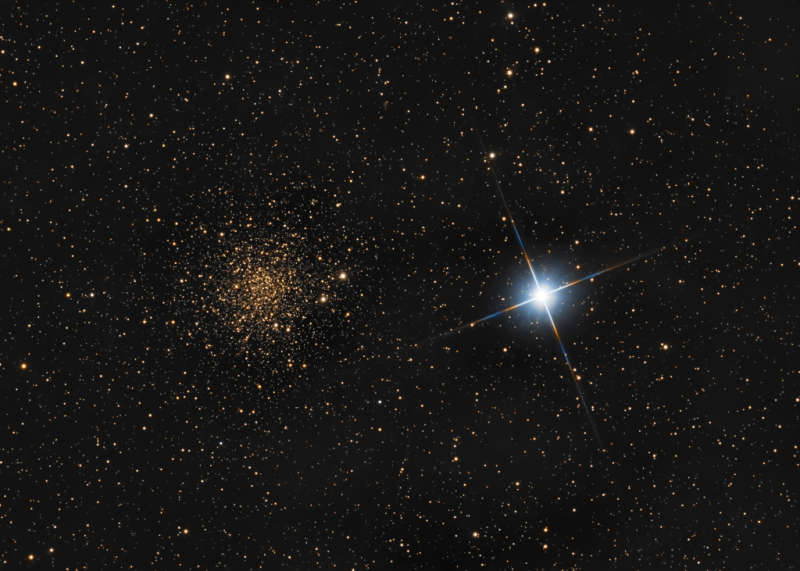Credit & Copyright: Massimo Di Fusco
Explanation:
Most
globular
star clusters
roam the halo of our
Milky Way galaxy, but globular cluster NGC 6366 lies close to the
galactic plane.
About 12,000 light-years away toward the constellation Ophiuchus,
the cluster's starlight
is dimmed and reddened by the Milky Way's interstellar dust
when viewed from planet Earth.
As a result, the
stars
of NGC 6366
look almost golden in
this telescopic scene,
especially when seen next to relatively bright, bluish, and nearby star
47 Ophiuchi.
Compared to the hundred thousand stars or so gravitationally bound in
distant NGC 6366, 47 Oph itself is a binary star system
a mere 100 light-years away.
Still, the
co-orbiting
stars
of 47 Oph are too close together to be individually distinguished in the image.
1999 2000 2001 2002 2003 2004 2005 2006 2007 2008 2009 2010 2011 2012 2013 2014 2015 2016 2017 2018 2019 2020 2021 2022 2023 2024 2025 |
Yanvar' Fevral' Mart Aprel' Mai Iyun' Iyul' Avgust Sentyabr' Oktyabr' Noyabr' Dekabr' |
NASA Web Site Statements, Warnings, and Disclaimers
NASA Official: Jay Norris. Specific rights apply.
A service of: LHEA at NASA / GSFC
& Michigan Tech. U.
|
Publikacii s klyuchevymi slovami:
globular cluster - Sharovoe skoplenie
Publikacii so slovami: globular cluster - Sharovoe skoplenie | |
Sm. takzhe:
Vse publikacii na tu zhe temu >> | |
